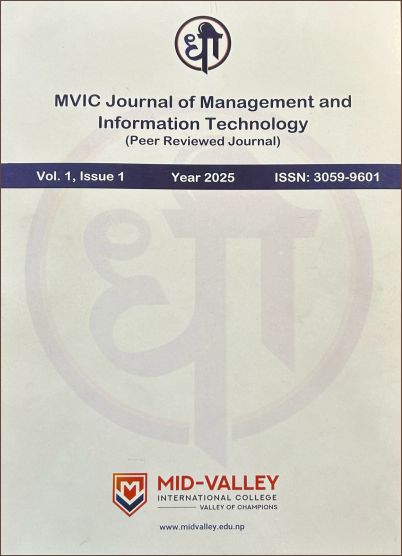Customer Perception towards E-Banking Adoption
DOI:
https://doi.org/10.3126/mvicjmit.v1i1.77359Keywords:
Customer perception, e-banking, Kathmandu valley, Cost-effective, ConvenientAbstract
This study investigates customer perceptions of e-banking in the Kathmandu valley. Employing a descriptive research design complemented by a qualitative strategy, the research utilizes a Likert scale to quantify user perceptions. The target population includes active e-banking users across 20 commercial banks in Kathmandu as of July 2024, with a sample size of 350 respondents selected through convenience sampling based on availability, willingness, and location. Data were collected via self-administered questionnaires distributed through email, social media, and physical copies, encompassing demographic information and survey questions aligned with six variable subcategories rated on a 5-point Likert scale. Analysis using SPSS revealed that the majority of respondents were male (61.18%) and aged between 20-30 years (75.3%), predominantly unmarried (83.06%) and well-educated, with 40.71% holding bachelor’s degrees and 21.18% possessing master’s degrees or higher. Income levels were primarily in the middle brackets, indicating e-banking’s appeal to middle-income individuals. Descriptive statistics showed general agreement on e-banking’s utility, with an average perception score of 3.58. Users particularly valued quick and convenient access to account information, though highlighted the need for improved security measures. The study concludes that e-banking is perceived as highly useful, efficient, and cost-effective, with opportunities for enhancing security and user experience to foster greater trust and broader adoption.




